- Matthew Spencer
- Albums and Singles
Madoromi is a Japanese idiom that describes the state between waking and dreaming. It is a perfect description for the album's placid sound and languid pacing. Unfortunately, it's also good description for my response as a listener.
Water has a definite narcotic effect on me. Whether I've just spent an hour swimming, or a day at the coast, I always end up tired. Sawako's music produces a similar side-effect. Like sunlight reflecting off a lake, the sounds on Madoromi are bright but fleeting. They flash, then fade, then reappear in a delicate clockwork motion. In the notes, guitar and vibraphone are listed alongside "found memory" and "sleeping melancholy" as if those abstractions were a sound source too.
Madoromi succeeds in being peaceful and beautiful, but not much else. It lacks the vigor of waking life, but also the free association of dreams. A gravity is missing, as if a wave of the hands would scatter the music. After a few tracks, that beautiful, crystalline sound grows predicable and a little bit bland. A slight melody or shift in timbre would focus the composition, but the loops and samples just repeat, as if Sawako had walked away from her computer and went to bed. The arrangements are meant to be simple and understated, but end up being monotonous instead.
Read More
- Administrator
- Albums and Singles
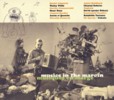 From Wesley Willis and Daniel Johnston to Jacques Brodier, Martha Grunenwaldt, Oscar Haus, and Dr. Konstantin Raudive, this compilation offers a variety of music by disparate artists on the fringes of society, whose only link is their idiosyncratic artistic vision. Lacking both a formal music education and pretentiousness, these artists' creations contain enough inventiveness and passion to make accepted conventions of musicality irrelevant.
From Wesley Willis and Daniel Johnston to Jacques Brodier, Martha Grunenwaldt, Oscar Haus, and Dr. Konstantin Raudive, this compilation offers a variety of music by disparate artists on the fringes of society, whose only link is their idiosyncratic artistic vision. Lacking both a formal music education and pretentiousness, these artists' creations contain enough inventiveness and passion to make accepted conventions of musicality irrelevant.
A few blocks from my house, a huge framed drawing of the Chicago skyline by Wesley Willis hangs on the wall of a burger joint that otherwise is inexplicably saturated in Scooby Doo paraphernalia. Although the venue is an unlikely host for this work of art, that it’s there at all speaks to Willis’ appeal to a wider spectrum of the populace than might be expected. Even his music, despite its factory preset accompaniments and its repetitive lyrical content, shows his uncanny ability to engage audiences with entertaining stories, stories that are all the more riveting because they’re usually true.
Willis isn’t alone. The other artists in this collection each have his or her specialty, from Jacques Brodier’s sound-effects wizardry, to the dustbin percussion of André Robillard or the accordion virtuosity of Oscar Haus. That they have little chance of even moderate financial success is unimportant since their music erupts from a wellspring of creativity that they cannot silence, sometimes even sacrificing technical ability in the fever of expression. Rarely is there a prohibitive self-consciousness at play, and what issues forth is sincere and without guile. These artists are unabashedly themselves, and it’s this quality that lends these songs an undeniable authenticity that augments their charm. Nor are these artists directly imitative of others who have gone before them. Instead, they share glimpses of their highly personalized, unique worldviews, of which music is only an extension and not some compartmentalized product for mass consumption. The resulting music is the direct result of artists who follow their muse no matter where it takes them, a philosophy many other musicians would be wise to adopt.
As for the music itself, much of it is enjoyable for its idiosyncrasies outside of its context. There’s the pleasantly quiet guitar and vocals of Anton et Quentin, Marcella Dumeray’s acapella singing, the brief therapies of Reinhilde Tastenoe, and the eerie Electronic Voice Phenomena recorded by Dr. Raudive. One of the highlights is Daniel Johnston’s “Premarital Sex,” which displays his songwriting skill on a shoddy organ. While not all of the artists have equal appeal, what’s included here is still valuable for the insight not only into the artistic process, but also for what it reveals about the artists themselves. On that note, I do wish that the biographies included in the liner notes weren’t so short, and I would have liked the inclusion of more details about the actual recordings. Because this compilation for the most part emphasizes Western artists, particularly Europeans and a disproportionate number of them Belgian, the selection on this disc is not a complete overview of outsider music, but it’s certainly a fantastic place to start.
samples:
- Jacques Brode - Extrait du 'Filtre de Réalité
- Wesley Willis - Trama Hell Ride
- Oscar Haus - Sans Titre
Read More
- Administrator
- Albums and Singles
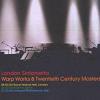 Recorded over three performances, this double album “best of” twentieth century music paired with orchestral versions of some of the better parts of the Warp catalogue is a treat. The interpretations of Aphex Twin and Squarepusher aren’t as exciting as expected but the interpretations of Cage, Reich, Ligeti, Stockhausen and Varese are better than I imagined.
Recorded over three performances, this double album “best of” twentieth century music paired with orchestral versions of some of the better parts of the Warp catalogue is a treat. The interpretations of Aphex Twin and Squarepusher aren’t as exciting as expected but the interpretations of Cage, Reich, Ligeti, Stockhausen and Varese are better than I imagined.
Warp
Aphex Twin’s two pieces for prepared piano do away with Cage’s original intention of having an entire range of percussion sounds available to a single piano player. Instead of using a number of different items with different sonic properties as tradition dictates, Mr. Twin lashes a chain across all the piano strings. The result is not the dramatic crash and thunder of Cage’s prepared piano pieces but a pair of quieter melodic pieces with a metallic flavour from the chains. The first of these two pieces, “Prepared Piano Piece 1,” (which is actually “Jynweythek” from drukqs) is the better of the two. The second piece is lacklustre and a let down after such a strong start. When Cage’s prepared piano pieces make their appearance later in the album, it is obvious that Cage is still far ahead of the pack. Even when a mediocre player tackles these pieces they still sound impressive and the renditions found here are far from mediocre. Rolf Hind captures the often overlooked playfulness of Cage’s sonatas; his playing here is most enjoyable.
The best pieces found on Warp Works & Twentieth Century Masters come from Steve Reich. His “Violin Phase” is simply beautiful; the violins spin off each other and interfere with each others’ sound in a dizzying display of phasing. However the gem in the centre of this album’s crown is Reich’s “Six Marimbas” which is absolutely dazzling. The layered rhythms make it hard to pick out any details in the playing but there is a slow change in texture as the piece progresses. The sound of all the bass notes being played blend into each other to make a constant shimmering hum, it sounds completely electronic but it’s not.
The juxtaposition of these heavyweight composers with the finest Warp has to offer didn’t result in the reaction in me that I imagine those involved wanted. The way the album is presented suggests that Aphex Twin and Squarepusher are the logical continuation of Cage, Reich and Ligeti. By pairing all these artists on the same bill and playing their music through the same medium (that of an orchestra) I noticed that when stripped of all the volume and electronic gizmos, the young turks really haven’t progressed far from where the masters had left off. Maybe if I was an academically trained musician I could understand what makes these Warp artists so much more special than what I feel they are but as a layman I don’t see how they’re in the same league as the composers found here. Granted the music of Aphex Twin and Squarepusher is frequently amazing and they both sound fascinating transferred to a “serious” musical setting but their place is on the stereo or in the club.
As an introduction to 20th century compositions Warp Works & Twentieth Century Masters is excellent. The performance given by the London Sinfonietta is exceptional; many renditions of these pieces can be stuffy and overly serious and here that is not the case. The London Sinfonietta tackles the pieces as music and not exercises in academic chin stroking. Surprisingly given the almost light hearted attitude to such heavy music, the Warp parts of the discs leave a little to be desired. These sound somewhat forced as if the Sinfonietta are trying to prove that it’s serious music. One or two of the pieces I’ll return to but I’d be more likely to go back to the original versions of these pieces.
samples:
- Prepared Piano Piece 1 (Aphex Twin)
- Six Marimbas (Reich)
- Chamber Concerto: Calmo, Sostenuto (Ligeti)
Read More
- Administrator
- Albums and Singles
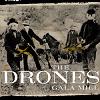 The third album from The Drones continues from where their last album left off. There’s no shock change of style, Gala Mill is made up of the same dirty, gritty rock that seems to be the standard for bands coming from Melbourne. The album is another sturdy release from the four-piece; they falter occasionally but keep it together in fine style for the most part.
The third album from The Drones continues from where their last album left off. There’s no shock change of style, Gala Mill is made up of the same dirty, gritty rock that seems to be the standard for bands coming from Melbourne. The album is another sturdy release from the four-piece; they falter occasionally but keep it together in fine style for the most part.
ATP Recordings
One thing noticeably different with Gala Mill is the length of the songs. Pretty much all the songs are five minutes or greater. The Drones normally stick to more radio friendly times for their songs so this was a surprise. I’m not sure if the longer song is suited to their style, however, as some of the songs on the album seem a little overstretched. The final song, “Sixteen Straws,” a ballad that goes on for close to ten minutes sees lead singer Gareth Liddiard tell a tale of life and death in colonial Australia. The song meanders a little but it is captivating in its quiet elegance, not a phrase I ever expected to use in this review.
With Gala Mill The Drones still haven’t captured the rawness and the power of their live show. It is frustrating listening to their studio output after having experienced them first in the flesh. The fly-on-the-wall interludes of the band talking in the studio (which become terribly annoying) suggest to the uninitiated that this is what The Drones sound like when they just belt out a song but it isn’t. Speakers should be melting when the CD is playing but alas they just get mildly hot. I was hoping that with more success they might have access to a better engineer to mix their music but my hopes have been dashed.
Still, Gala Mill is as good as anything else they’ve released. It’s good honest to God and damned to hell rocking and I like it. Songs like “Jezebel” and “Word from the Executioner to Alexander Pearce” show that they have been honing their songwriting skills. Music and lyrics are well matched on every song. Fiona Kitschen’s angelic backing vocals add an innocent counterfoil to Liddiard’s menacing slur. The only problem is at times they very nearly become a tribute to The Birthday Party or Dirty Three but in the end they always manage to steer clear. I wouldn’t say that The Drones have developed a hugely unique sound but instead I feel they are continuing a tradition of Australian rock that makes up for every time I hear an INXS song. There is the odd song that does step further away from the obvious influences like the aforementioned “Sixteen Straws,” “Are You Leaving for the Country” and “Work for Me.” The latter features Kitschen on lead vocals and it is a far cry from anything else on the CD.
Gala Mill is a solid release with some very strong songs that the band should be proud of but I’m afraid I’m still waiting for The Drones to produce their masterpiece. Each album sees them progressing towards the perfection I hope they achieve. Maybe next time I’ll get my wish.
samples:
Read More
- Administrator
- Albums and Singles
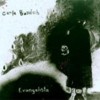 On her new album, Carla Bozulich uses her voice, strings, guitars, and well-contained distorted elements to create a rich recording full of dark lyrical imagery that haunts well after its flashes of tenderness have faded.
On her new album, Carla Bozulich uses her voice, strings, guitars, and well-contained distorted elements to create a rich recording full of dark lyrical imagery that haunts well after its flashes of tenderness have faded.
Bookending the album are two versions of the title track. "Evangelista I" opens ominously with scratchy violins and rattling knocks, forming dense textural layers that nonetheless remain distinct. Bozulich uses her voice in a combination of howling supplications and breathy exhalations, pushing massive quantities of air and growling all over her range. Droning feedback and strings define the space without ever succumbing to chaos.
Quieter and gentler is "Steal Away," a take on a traditional arrangement. Despite the intimacy of her voice and a little guitar, distortion rules "How to Survive Being Hit by Lightning." A simple drum is buried deep within the mix and the melody grows in prominence as the song progresses, pushing the distortion to the background. A skipping guitar ushers in the ending. The cover of Low’s "Pissing" uses organ as the main backing instrument, culminating in a sweltering rush that raised the hairs on the back of my neck. She uses great layering of vocals that are very effective in making this version of the song unique.
A few of the tracks rely a little too heavily on atmosphere and don’t quite fulfil their potential. Most of the songs have such similar compositional elements that the abstractions like "Sleeps Inside" and "Nels’ Box" aren’t so riveting as some of the others. The album closes with "Evangelista II," revisiting similar themes as the opener, but this one’s a more sober, subdued affair, a much-needed relief from some of the white-knuckle flights that come earlier. In all of the mighty peaks to be found here, Bozulich commands attention with the strength and versatility of her voice, assailing the ears with beseeching wails and incantations that inspire dark devotion.
samples:
 
Read More
- Administrator
- Albums and Singles
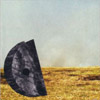 Despite being one of the most compelling entities to emerge from England’s fertile ‘80s post-industrial scene, Zoviet France remain a largely unheard and somewhat mythical band. Obviously, the main reason for their relative marginalization is that their albums (aside from a few late period ambient works) have historically been quite hard to track down. I suspect that was true even during their prime, as I am certain that I would have bought an album packaged in a canvas sack or between roofing shingles if it had appeared in one of the record stores I frequented as a teen (regardless of who it was by). Thankfully, the magic of the Internet has rescued this lost classic from the cruel fate of vanishing without ever being properly appreciated.
Despite being one of the most compelling entities to emerge from England’s fertile ‘80s post-industrial scene, Zoviet France remain a largely unheard and somewhat mythical band. Obviously, the main reason for their relative marginalization is that their albums (aside from a few late period ambient works) have historically been quite hard to track down. I suspect that was true even during their prime, as I am certain that I would have bought an album packaged in a canvas sack or between roofing shingles if it had appeared in one of the record stores I frequented as a teen (regardless of who it was by). Thankfully, the magic of the Internet has rescued this lost classic from the cruel fate of vanishing without ever being properly appreciated.
Red Rhino/Charrm
Due to the shadowy and elusive nature of their releases, it takes some serious effort to acquire a complete understanding of how Zoviet France’s sound evolved over the years. Hearing one ZF album does not necessarily provide a reliable estimate of what another one might sound like, as the band went through a number of significant personnel and stylistic changes over the course of their two active decades. 1988’s Shouting at the Ground, however, has managed to emerge by general consensus as as one of the clear highlights in their sprawling and disorienting discography. The reasons for that are self-evident upon hearing it, but it is also significant for being the most listenable nexus at which ZF’s forays into ambient, harsh tape loop collages, and neo-tribalism converged. This particular vein never got pursued as far as it deserved, sadly, as the remainder of ZF’s career is strewn with live albums, compilation albums, deleted albums, long hiatuses, and one-off experiments (like deconstructing Ry Cooder).
The bulk of Shouting at the Ground is composed of very brief sound experiments that often run under two minutes. Rather than feeling like a bunch of prematurely abandoned song sketches, however, they unfold like series of otherworldly, self-contained miniatures. To say they are eclectic would be a gross understatement, as they range from breathy primitive flutes to Eastern strings to dense, insistently repeating tape loop pile-ups. The only conspicuous unifying features are that they are invariably grittily lo-fi and a little bit ominous. Some of them can get quite harsh (“Dybbuk” makes me feel like I am being attacked by swarm of vampire bats), but most are meditative or at least hypnotically repetitive. One notable aspect about the hallucinatory and unfamiliar menagerie of sounds gathered is that the vast majority of Zoviet France’s material originated from live instrumentation. The semi-anonymous, ever-shifting cabal of contributors amassed quite an array of ethnic and homemade instruments over the years and recorded untold hours of ideas and improvisations with them (the key to ZF’s unusually organic sound). All those tapes were then sifted through, manipulated, and painstakingly shaped into often wildly different form before ultimately appearing on an album. The amount of time that it must have required to edit and tweak that mountain of raw material without a computer seems almost impossibly daunting and makes my brain hurt.
Listening to the album is disconcertingly analogous to a surreal walk down a long, dimly lit hallway: exotic instrumentation and weird, inhuman loops drift in and out of the aural landscape- just fleeting, disconnected snatches of mysterious soundworlds lurking behind closed doors. The reason that this image feels so apt is that the end of the album feels like a destination has been reached: “Shamany Enfluence” and “The Death of Trees” both unfold into epic, immersive, and evolving vistas. To further belabor my inadequate visualization: a pair of doors finally open and unveil their complete and unsettling contents.
The distorted alien chanting of “The Death of Trees” is pretty engaging simply because it sounds creepily and utterly unearthly, but “Shamany Enfluence” is the album’s clear centerpiece (and masterpiece). Describing it as “ethno-ambient” provides a vague idea of how it sounds, but it is a thoroughly simplistic and misleading one. At its best, it sounds more accurately like a decaying transmission of a forgotten tribe’s mourning ceremony (accompanied by a chorus of psychedelic frogs). It is at once eerily beautiful and wholly “other” and would have made the perfect end to the album. Instead, the aforementioned “The Death of Trees” follows for a necessarily anticlimactic conclusion, but I can’t fault the band for its placement: it was too good to leave off and it wouldn’t have fit anywhere else. From start to finish, this is inarguably one of the most strange and visionary albums to emerge from 1980’s England—no small feat, given the competition. Shouting at the Ground is the sound of a band straining their ingenuity and creativity to the limit in hopes of forging something stunning and unique (and succeeding).
(Aside: While I was researching this album, I found an Italian language history of Zoviet France and unsuccessfully attempted to translate it using Babelfish. "Album" translated as "egg white" and I learned that their sound is based primarily upon "monoropes.")
Samples:
Read More
- Administrator
- Albums and Singles
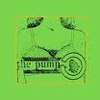 For Nigel Ayers the systematic derangement of the senses has never been enough. From the beginning of his career he has sought nothing less than the total disarrangement of reality. Using slowed down voices, sludgy bass, noisy analog synthesizers, guitar and weird effects, these unorthodox statements from his first band sound as if they were made in an atmosphere of cerebral discord. Conventions of musicality are thwarted in favor of shoestring arrangements gelled together by intuition rather than adherence to preconceived formulas. Traversing terrains that range from the psychotropic to psychotic, the collected works of The Pump make for an artifact that is not easily pigeon holed, not now, and probably not in the late 1970s when the group first formed with his brother Daniel Ayers and the late Caroline K.
For Nigel Ayers the systematic derangement of the senses has never been enough. From the beginning of his career he has sought nothing less than the total disarrangement of reality. Using slowed down voices, sludgy bass, noisy analog synthesizers, guitar and weird effects, these unorthodox statements from his first band sound as if they were made in an atmosphere of cerebral discord. Conventions of musicality are thwarted in favor of shoestring arrangements gelled together by intuition rather than adherence to preconceived formulas. Traversing terrains that range from the psychotropic to psychotic, the collected works of The Pump make for an artifact that is not easily pigeon holed, not now, and probably not in the late 1970s when the group first formed with his brother Daniel Ayers and the late Caroline K.
This CD collects together music from two cassettes originally released by the band in tiny editions circa 1980. The tyranny of Dolby noise reduction doesn't seem to be present, though they have been remastered and presented all together on a compact disc. The songs are very far from concise but exhibit a playful malevolence that is nevertheless enjoyable. All but one of these 19 tunes are under five minutes in length, with many being less than two. I don't think they were kept short to gain more attention for radio airplay: the only hooks these songs have are the squelchy electronic kind that dig into your brain. Though as far as dirty basement scuzz goes, this is some of the best available.
Nigel Ayers has a knack for naming songs. I'm sure he had quite a hand in giving these their names because reading the list is almost as fun as listening. “Inner Riot Cola” starts the disc off and sets the right mood with a bit of microphone fuzz and a voice saying, “Hello. I'm talking very highly...my voice will be slowed down when I play it back, and it will sound normal.” The high pitched voice sounds remind me of a soda drinking kid who has had too much caffeine, and I considered the rest of the disc in light of that voice, as it is filled with the same playful exuberance and boundless energy that children know. Unhampered by rules and regulations The Pump made up its own musical game, owing little to other styles and trends. In doing so they attacked rigid minds in an attempt to break them down. This is nowhere more evident than in “The Eleven Thousand Year QC,” a rambling science fictional monologue and political diatribe. One of the things I admire about Nigel is that he has never shied away from making his music political, and in this song the words “duty experiment” are mentioned for the first time, a motif that he explores more thoroughly in the guise of Nocturnal Emissions. Read in a stately monotone it sounds like a newscast from a far dystopian future, with peculiar electronics lurching underneath it all.
The next song ,“Earth Vows,” is one of the best. The ebb and flow of ominous phase shifters is accompanied by what sounds like telemetry and smothered hand drums. The false hints of melody fade in and out obscured by speaker hum. “Futures Unlimited” has a static drum machine beat, nostalgically cheap and dated sounding, with a warbling bass line that keeps it all together. It doesn't matter that the bass and beat aren't exactly in sync—it's like they are there only to give a context to the other spastic and dithering noises. “Slangy Policies” is another gem: a synth stonewashed in reverb has the focus now, accompanied at times by vaguely martial percussion. “Bats Fist” is another teetering and gnarly bit of synth slush. This is the kind of noise I like, stuff that is not reliant on volume levels to make an impact, or on shrillness, but is composed of wobbly textures that make me feel unbalanced, mentally and otherwise. “In A Box” is a sound poetry piece, with Caroline K's voice mixed with a clutter of debris.
Briefly on “Unsoiled Nukes” things sound like they could blast off into a kraut-infused free-for-all where the rhythmic elements might finally find some cohesiveness. At 53 seconds though it just doesn't last (I love it anyway). Attention is paid throughout most of the songs to the mixing specific sounds to either the left or right channel exclusively. Nowadays, while panning is just one trick in an arsenal of studio techniques, most albums tend to be more subtle with it, but I like it when things are panned hard to one or the other side. “Is it something I said?” is the longest song on the disc, and sounds like it was recorded at a live performance, as it has a much more mono sound then the rest, and whooping voices can be discerned in the background. Of all the tracks it is the most visceral and has the most squeal. I like the garbled and melted sounding voice that taunts throughout, making the unnerving buzz and unyielding oscillations tolerable (left alone I don't know if they would be).
Some of these songs were included on the Nocturnal Emissions “Lest We Forget” 4xLP+7" set from Vinyl-On -Demand that came out in 2008. This disc however includes all the material released by The Pump and is thus a perfect edition for the serious collector.
samples:
Read More
- Administrator
- Albums and Singles
 High Place’s second proper full-length album is a gutsy and daring surprise, as Mary Pearson and Rob Barber have cast aside much of the childlike innocence and fragility that characterized their earlier releases in favor of a darker, more muscular new direction. While I still prefer the quirky, blurred pop from their past, the shift towards a sharper-focused, more visceral sound works far better than I expected.
High Place’s second proper full-length album is a gutsy and daring surprise, as Mary Pearson and Rob Barber have cast aside much of the childlike innocence and fragility that characterized their earlier releases in favor of a darker, more muscular new direction. While I still prefer the quirky, blurred pop from their past, the shift towards a sharper-focused, more visceral sound works far better than I expected.
High Places vs. Mankind begins on a promising note, as layers of dubby percussion and burbling synthesizers coalesce into an odd and irresistable groove. Mary Pearson’s vocals sound a bit tougher and more adult than usual, but “The Longest Shadows” has a cool melody and a great guitar riff going for it, so it all works beautifully. In fact, all the necessary elements for a perfect indie pop masterpiece are present, but it frustratingly just misses the mark by going on for almost six minutes and having an odd middle section that doesn’t feel like it belongs in the same song. Nevertheless, I still find myself listening to it quite a lot, as the music is extremely enjoyable despite its minor presentation flaws.
Fortunately, the second song (“On Giving Up”) gets everything just right. It has all of the same positive attributes of its predecessor (catchy guitar riff, unexpectedly heavy beat, strong vocals), but is structured much better and is about half as long. It was at this point that it dawned on me that I was listening to a very different High Places than I was used to. The only clear link between this album and the past is that Barber’s passion for unusual rhythms and appropriation of exotic sounds and instrumentation remains a driving force, but the beats have gotten much heavier and have been joined by relatively straightforward guitars. Also, Pearson’s characteristically warm and sweet vocals are pretty rare, as she more often sounds intense or sultry (particularly during the “tonight is going to be the night” chorus). Notably, she has also dropped the omnipresent nimbus of reverb and delay from her voice and tries her hand at singing with very little production enhancement. For these first two songs, High Places sound far more like eccentric New Wave revivalists than the introspective dreampop ethnophiles I was anticipating, but they do it so well that I don’t care.
Then an interesting thing happens, as the third song ("She’s A Wild Horse") takes things back to gentler, more languid times and it actually sounds pretty boring after the album’s thumping, infectious start. The fault lies mostly in the songwriting though, as it sounds like a half-baked and sketch-like retread of their past (plus it is not helped by fairly mundane guitars and the intrusion of a disproportionately exuberant beat). The next track (“The Channon”) is equally exasperating, but for different reasons: the music is warm, shimmering, and beautiful, but it just ends after about 2 minutes without ever adding vocals or evolving into an actual song.
Thankfully, the second half of the album eventually bounces back from the 3- or 4-song lull in the middle, though it never quite hits the highs of the opening tracks. However, there are still a lot of great ideas tossed out and some very good songs: “Constant Winter,” “The Most Beautiful Name,” and “When It Comes” all have very likeable and propulsive grooves and the lurching, minimal “On A Hill on a Bed on a Road in a House” is endearingly strange and imaginative.
As a whole, I have fairly conflicting feelings about this album, but they’re generally positive. It is a bit hamstrung by intermittent bloat, filler, and somewhat weak material, but there are also several great songs that make it a worthy addition to their oeuvre. Also, it took some gravitas for Rob and Mary to make an album like this: they already had a distinct sound and a fan base that loved it, so it would have been much safer to stay the same. There are still some kinks to work out (the guitar parts aren’t always a good idea, the songs are a bit too reliant on drums, and Mary’s lilting vocals are sometimes an uneven match for the heaviness of the rhythms), but High Places remain a very charming and unique band. They may be a bit less tender and intimate now, but the sound of two introverts trying to get a kick-ass party started is still very appealing in its own right.
Samples:
Read More
- Administrator
- Albums and Singles
 Although many of these songs were made available previously on an identically named and highly limited edition album from 2004, this is not technically a reissue as the material has been reworked and the album has been quite expanded compared to the original. The quiet white light at the core of the music has been refracted and split into a rainbow of strings and woodwind, all arranged by Maxim Moston (best known for his work with Antony and the Johnsons and Rufus Wainwright). The sweetness of the songs become even more pronounced with its small orchestral backing, although Moston does not over-clutter Dee’s songs and allows her singing and piano to take center stage.
Although many of these songs were made available previously on an identically named and highly limited edition album from 2004, this is not technically a reissue as the material has been reworked and the album has been quite expanded compared to the original. The quiet white light at the core of the music has been refracted and split into a rainbow of strings and woodwind, all arranged by Maxim Moston (best known for his work with Antony and the Johnsons and Rufus Wainwright). The sweetness of the songs become even more pronounced with its small orchestral backing, although Moston does not over-clutter Dee’s songs and allows her singing and piano to take center stage.
Drag City (US) / Tin Angel Records (Europe)
The bawdier side of Dee’s songwriting is absent from A Book of Songs for Anne Marie, instead here she opts for some of her more introspective pieces. It is easy on her other albums to get caught up in the fun of albinos and a mother-bashing Jesus but with such tender beauties as “Love’s Small Song” and “Unheard of Hope,” it is a joy to be reacquainted with Dee’s serious side. “Who writes a song must love to hear it sung and gentle hope has my song a reckless one” she sings on “Endless Night” and this sentiment rings true throughout A Book of Songs for Anne Marie; Dee always sounds like she is approaching a song for the first time, full of a joyous trepidation like a fawn taking its first steps.
“Black But Comely” is one of Baby Dee’s defining songs, biblical allusions and mystical romance colliding in an elegant dance. Its latest incarnation sees her dream-like harp drifting on a bed of violins like a cloud under a cupid. From here, it would be easy to falter but Dee never wavers; each song is crafted masterfully. The new songs not originally included on the first version of A Book of Songs for Anne Marie are not mere off-cuts included to get die hard fans to buy the album again. Each of these new songs capture the same warmth as the songs from the original set. “As Morning Holds a Star” in particular stands out as being another classic.
If A Book of Songs for Anne Marie was just a regular reissue of the original album, it would be a welcome release for sure as that short album contains some of Dee’s finest songs. With its polish and its renovation, the album now does the songs more justice and makes it sound like the music has matured in the last six years. Unfortunately the book included with the original has not been replicated but I appreciate the efforts made on the music much more in any case.
samples:
Read More
- Administrator
- Albums and Singles
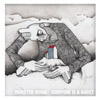 Rather than the work of ironic hipsters or bandwagon jumpers, the duo of Sean Hewson (of Eternal) and Chrisian Savill (of Slowdive) is the real deal. Given Savill’s genre-defining guitar sound the two bring a classical sense of pop know-how and the ability to craft undeniably catchy songs that could be from another era, but make for irresistable listens in 2010.
Rather than the work of ironic hipsters or bandwagon jumpers, the duo of Sean Hewson (of Eternal) and Chrisian Savill (of Slowdive) is the real deal. Given Savill’s genre-defining guitar sound the two bring a classical sense of pop know-how and the ability to craft undeniably catchy songs that could be from another era, but make for irresistable listens in 2010.
The moment I heard the opening moments of "Bored Beyond Oblivion," I knew I was in for something good: a stiff drum machine beat, treated vocals, and chugging distorted guitar. It called to mind the Jesus and Mary Chain of the later '80s, and a little bit of A Place To Bury Strangers, but with the focus much more on creating catchy pop rather than volume levels that can do structural damage. There's very few combinations of sounds that I find as good as an unhinged guitar and a dated drum machine, so hearing them here brought an immediate smile to my face. "Silver Knife" has a similar tact, hiding gentle melodies under the brittle distorted guitars augmented by some extremely subtle keyboard playing.
Good old fashion synth pop makes an appearance as well: "Down, Down, Down" has chintzy keyboards and electric pianos taking the lead, burying the guitar low in the mix as a textural element and even tossing in some synth strings. It's just the right mix of schmaltz and compelling to keep it stuck in the head for hours afterward. The stripped down structure of "Everyone Is A Ghost" slows things down: its combination of arpeggiated bass synth, analog leads, and an ancient drum machine rhythm (yay for 808 handclaps!) isn’t far removed from the earliest of synth pop. "Fall" and "The World Collapsed" modernizes the electro pop a bit, with the lush (and sometimes cheesy) synth arrangements channeling just a bit of Erasure.
A few of the tracks strip away the electronics almost entirely, instead opting for laconic acoustic pop. Both "How the Dead Live" and "A Place in the Mountains" are just vocals and acoustic guitar, and "In The Morning" mixes in drums, giving it more of a 1990s alternative feel than the decade prior exercises around it, but is just as catchy and endearing as the rest. Personally I think "In The Morning" is the best of the acoustic-focused trilogy, with the other two just feeling too sparse, and doesn't allow Savill's trademark hazy guitar sound to appear. Oddly enough, the sore thumb on the disc, "Help Me Make It Right" features synths that are much more modern in sound, distortion on the drum machine and heavily vocoded voices that sound far less conventional than the rest, is probably my least favorite track here. Not that it isn’t good, it just feels more experimental in an otherwise catchy, earworm laced disc.
There is definitely an undercurrent of nostalgia, but not one that’s satisfied to simply mine the same sounds as before, but instead relocate them to the present day to create an album worthy of the band's legacy. It is unfortunate that on their fourth album and tenth year, they haven't reached the level of notoriety that other similar projects have managed to garner. Perhaps this will be the breakthrough release for Monster Movie...it is certainly strong enough to be.
samples:
Read More
- Administrator
- Albums and Singles

Artist: TenHornedBeast
Title: Hunts & Wars
Catalogue No: CSR130CD
Barcode: 8 2356649902 2
Format: CD in 6-panel Digipak
Genre: Doom / Guitar Drone / Dark Ambient
Shipping: 19th April
TenHornedBeast’s third album for Cold Spring Records is titled “Hunts & Wars”. Recorded over a three year period from 2006 to 2009 this album introduces subtle changes to the established TenHornedBeast sound with shorter delicate interludes separating longer tracks that rage with heavy distortion and doom-drone barbarism.
“Hunts & Wars” progresses the established TenHornedBeast sound using leaden, sub-tuned bass guitar to create rhythms and riffs that dominate a battlefield of vast ritual percussion and droning walls of electric dissonance, creating epic and expansive textures that by turns burn with frost and freeze with fire.
Heavily influenced by the oneiric visions of Robert E Howard and Lord Dunsany. ”Hunts & Wars” seeks to evoke the elemental, anti-modern fantasias of these writers and is presented in a lavish digipak designed by noted American graphic designer Kevin Yuen (Sunn O))), Wolves In The Throne Room) to its full grotesque glory.
The days have come when the steel will rule. Titans arise, monuments fall. Ballads of victory and defeat are sung aloud as from the highest steps we are swept on to the eternal Hunts and Wars.
Tracks: 1. Reaching For The Stars We Blind The Sky | 2. Hilnaric | 3. Father Of The Frosts | 4. Ironborn | 5. I Am The Spearhead | 6. Season Of Wars | 7. Hunts & Wars
\n
Read More

